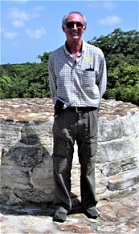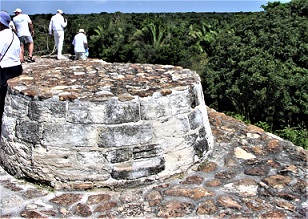


|
|
|
|||||||||||||||
|
|
||||||||||||||||
|
|
|||
|
|
Belize
Altun Ha
Located 30 miles (50 km) north of Belize City and about 6 miles from the shore of the Caribbean Sea, Altun Ha, was first settled around 250 BC. It was around 100 AD that the construction of the buildings - which can be seen there now - was started, something which was to continue throughout the Classic period ending in the 10th century.
About 900 AD a number of the tombs of the elite were looted suggesting some sort of revolt against the city’s rulers. Although the site continued to remain populated for another hundred years there were no new major buildings. The population then started to decline and the city reverted to a small agricultural village with many of the stones from the buildings being used for the construction of the homes by the residents. Altun Ha was rebuilt several times during the Pre-Classic, Classic, and Post-Classic Periods an indication of its turbulent history. The site was discovered in 1963 with excavations beginning in 1965; it is currently the most extensively excavated of all the Maya sites in Belize.
The name Altun Ha comes from the Maya translation of Rockstone Pond. At its height, Altun Ha was a significant trading centre with a population of around 10,000 living in and around the city. Covering an area of 5 square miles (8 km), the central square mile of the site has the remains of around 500 structures. At its centre are two plazas named Plaza A and B, these contain a number of structures and are surrounded by towering temples.
To see more photographs and take a virtual tour of the site click on the photoshow below. |
|
|
|
|
|||
All Photographs were taken by and are copyright of Ron Gatepain
| Site Map |

